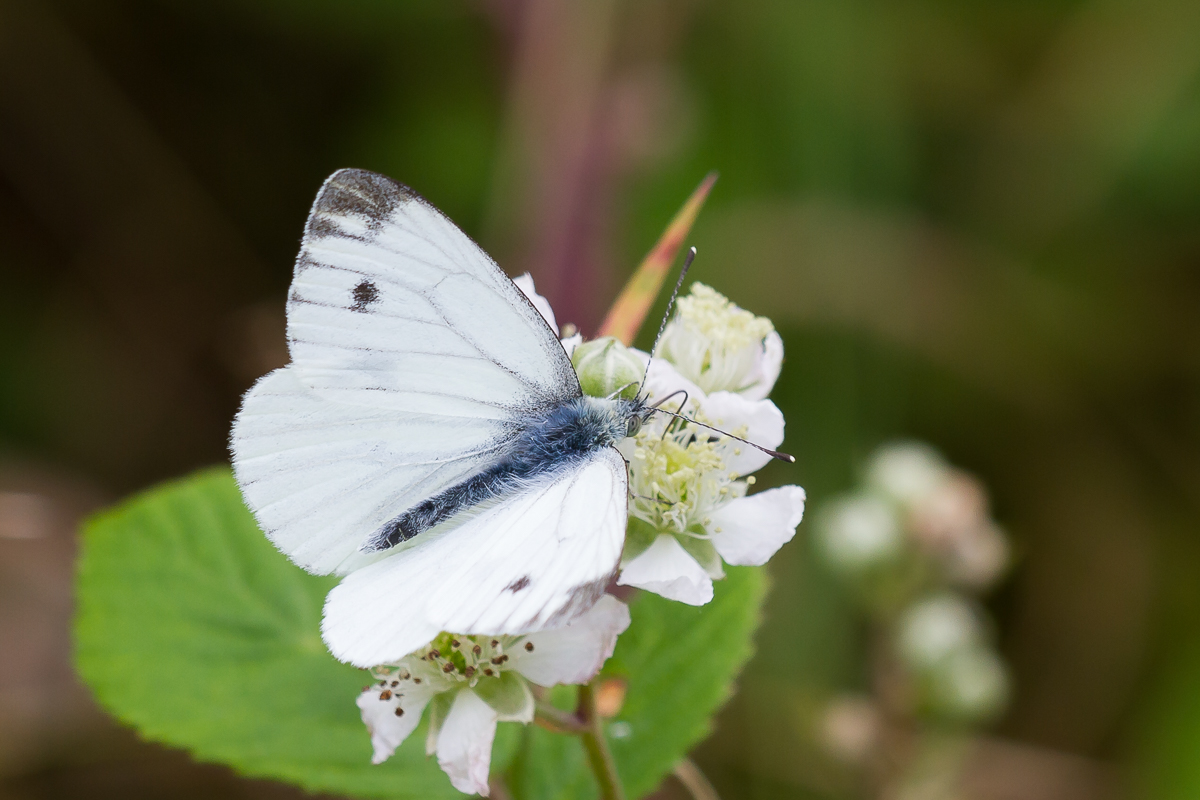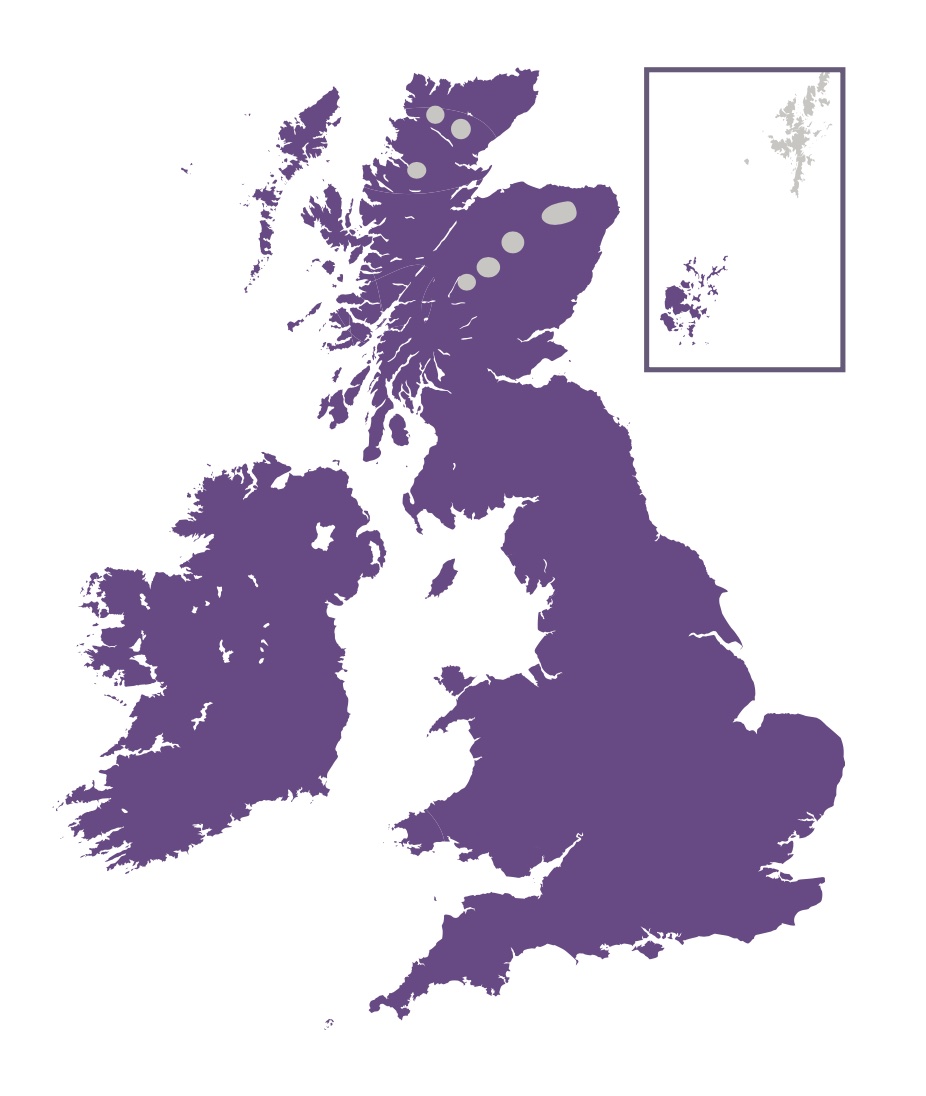
Photo © Peter Eeles
This is a common butterfly of damp grassland and woodland rides and is often mistaken for its cousin, the Small White. It can be found from spring through to autumn in parks and gardens, as well as less-urban areas such as meadows and woodland rides. The so-called green veins on the underside of the adults are, in fact, an illusion created by a subtle combination of yellow and black scales. This is one of the most widespread species found in the British Isles and can be found almost everywhere although it is absent from Shetland and areas of the Scottish Highlands. It is also a highly-variable species and populations have been distinguished based on an analysis of androconial scales as documented in Warren (1967), Warren (1968), Thomson (1970b) and other articles.
As in most species, the males emerge a few days earlier than the females, and spend much of their time searching for a mate as they fly along woodland rides and hedgerows. As well as taking nectar, males may also be seen congregating on mud or other surfaces that are rich in nutrients, giving rise to the phenomenon known as "mud puddling".
As in many whites, an already-mated female will indicate an unwillingness to mate by holding her wings flat and her abdomen upright, making it impossible for a male to mate with her. However, this doesn't always work, and females have been known to mate more than once, although this is completely unnecessary for the fertilisation of the eggs.

The butterfly can be found in a variety of locations, including parks, gardens, meadows, woodland rides, hedgerows and, in fact, anywhere foodplants and nectar sources exist. This species favours damp areas but can also be found in small sheltered pockets, such as patches of scrub, in dry and open habitat such as chalk grassland.
Adults feed primarily on Betony (Betonica officinalis), Bluebell (Hyacinthoides non-scripta), Bugle (Ajuga reptans), buttercups (Ranunculus spp.), Common Fleabane (Pulicaria dysenterica), Cuckooflower (Cardamine pratensis), Greater Stitchwort (Stellaria holostea), Hemp-agrimony (Eupatorium cannabinum), knapweeds (Centaurea spp.), Ragged-Robin (Silene flos-cuculi), ragworts (Jacobaea spp.), Red Campion (Silene dioica), thistles (Carduus spp. and Cirsium spp.), vetches (Vicia spp.) and Wild Marjoram (Origanum vulgare).
The primary larval foodplants are Charlock (Sinapis arvensis), Cuckooflower (Cardamine pratensis), Garlic Mustard (Alliaria petiolata), Hedge Mustard (Sisymbrium officinale), Large Bitter-cress (Cardamine amara), Water-cress (Nasturtium officinale), Wild Cabbage (Brassica oleracea var. oleracea) and Wild Radish (Raphanus raphanistrum ssp. raphanistrum). Nasturtium (Tropaeolum majus) is also used.
